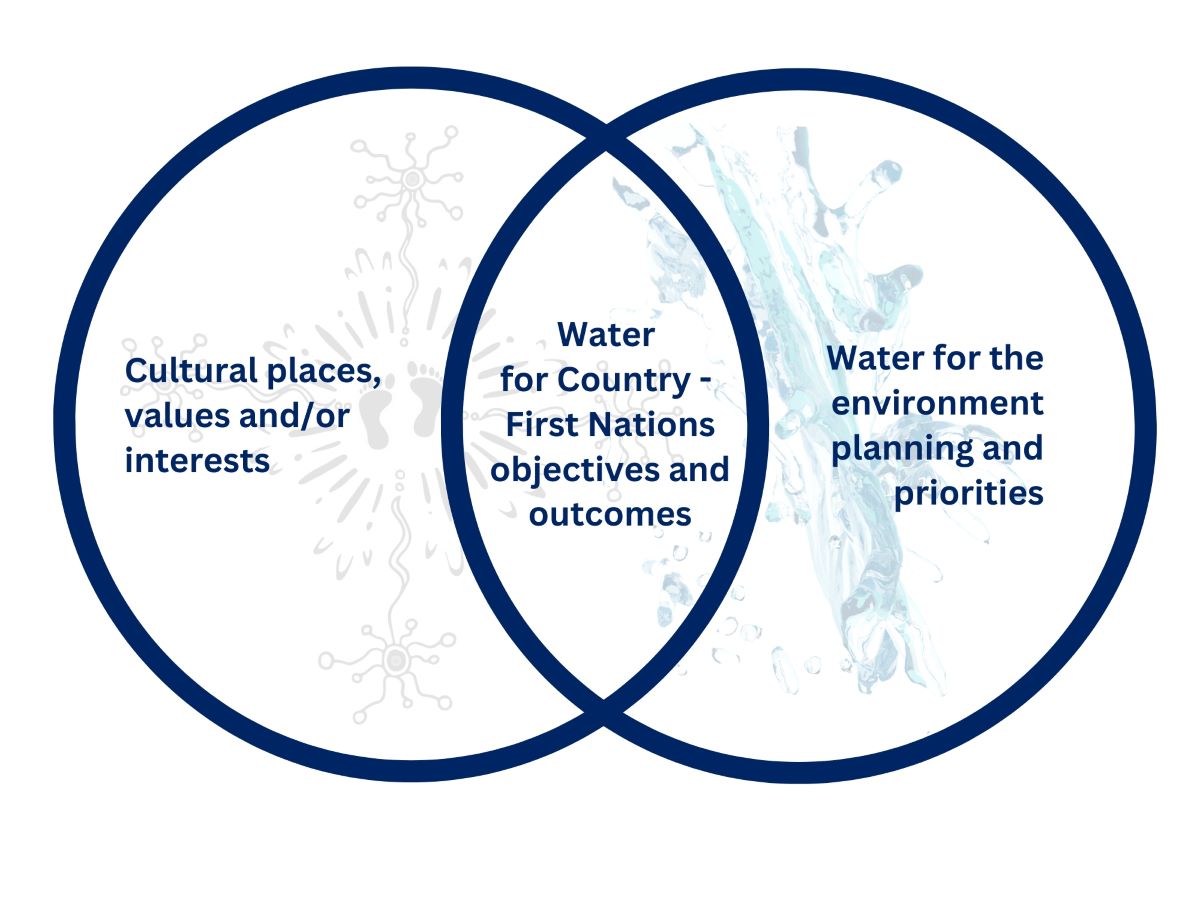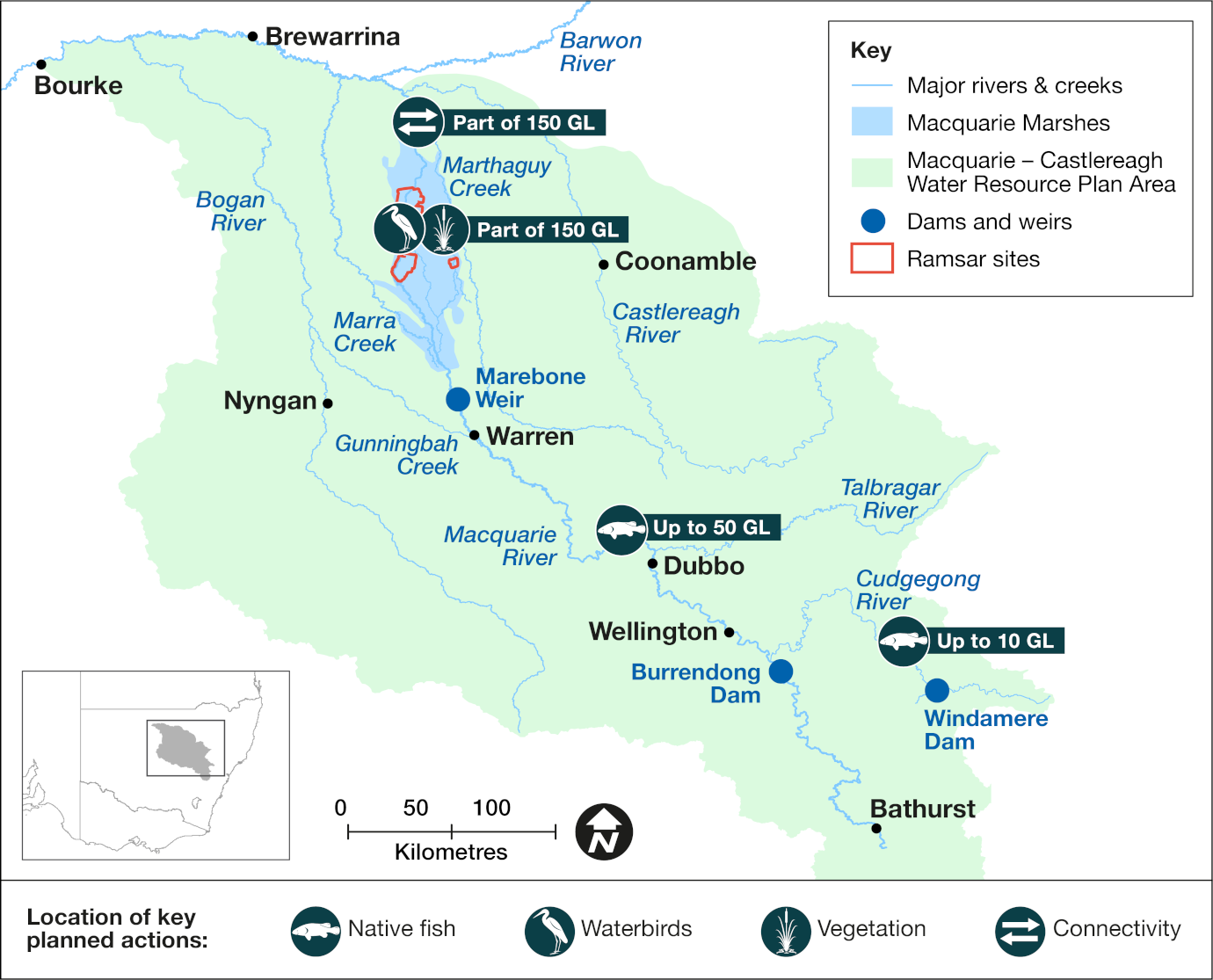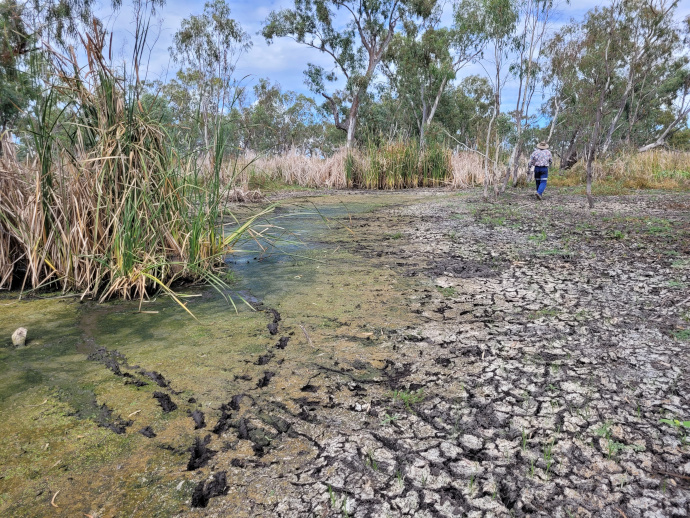Water that is allocated and managed specifically to improve the health of rivers, wetlands and floodplains is known as water for the environment.
Our environmental water management teams work with environmental water advisory groups including landholders, Aboriginal stakeholders, partner agencies and other interested community members to develop detailed annual plans for the use of water for the environment in each catchment, including how its use is prioritised.
Water for rivers and wetlands
Projected water for the environment account balances at 1 July 2024 will depend on:
- rainfall in autumn and winter 2024
- possible triggering of the Macquarie Translucent Environmental Water Allowance
- planned maintenance of the Burrendong Dam penstock, which will constrain releases in June, July and August 2024.
It is estimated that available water for the environment at 1 July 2024 will be:
- 270–300 gigalitres (GL) of general security carryover in the regulated Wambuul – Macquarie River, in addition to 9.7 GL of supplementary and 5.8 GL of unregulated water held between NSW and the Commonwealth Environmental Water Holders.
- 18–20 GL of the Cudgegong Environmental Water Allowance carryover in the regulated Cudgegong River, in addition to any general security allocations.
The Macquarie–Cudgegong Environmental Water Advisory Group endorsed rolling and annual objectives for 2024–25. These include using environmental water to support:
- native fish, wetland vegetation, waterbirds and connectivity in the Wambuul – Macquarie River and Macquarie Marshes
- native fish and river processes, including flow variability, in the Cudgegong regulated reach.
Water managers plan to hold a portion of water aside as carryover in general security accounts to support rivers and wetlands over the next 2 to 3 years for future use.
Partnering with Aboriginal peoples
Water for Country is environmental water use planned by the Department of Climate Change, Energy, the Environment and Water (the department) and Aboriginal people to achieve shared benefits for the environment and cultural places, values and/or interests.
The Wiradjuri Wongaibon people of the Trangie area have a representative on the Macquarie–Cudgegong Environmental Water Advisory Group.
In 2024–25, we hope to continue to improve systems and representation to better include the voice of the Wiradjuri and Wayilwaan nations in environmental water planning. This includes to:
- continue to build local relationships with Aboriginal people
- support Aboriginal representatives to include their priorities in environmental water advisory group discussions
- partner with Aboriginal people to examine watering viability for selected assets, including areas near Trangie and Warren
- work with organisations across the catchment to inform the 2024 review and update of the Macquarie and Castlereagh Long-Term Water Plan.
Weather and water forecast
As of June 2024, the El Niño–Southern Oscillation outlook is neutral. That is, neither La Niña nor El Niño conditions are favoured as oceanic and atmospheric indicators have returned to neutral levels. International climate models suggest neutral El Niño–Southern Oscillation conditions will persist through the southern winter, but there are some signs that La Niña conditions could form later in the 2024–25 water year.
Water managers have prepared watering plans that consider a range of weather and water availability scenarios. This is known as resource availability scenario planning.
Resource availability scenario
This table provides details about how we plan for different resource availability scenarios. Wet trending towards moderate conditions are forecast for the Macquarie catchment in 2024–25, which means water availability planning will follow the ‘moderate’ and ‘wet’ scenarios.
Current forecast: Moderate to wet
| Conditions | Main aim | Other aims |
|---|---|---|
| Very dry | Protect | Avoid critical loss Maintain key refuges Avoid catastrophic events |
| Dry | Maintain | Maintain river functioning Maintain key functions of high priority wetlands |
| Moderate | Recover | Improve ecological health and resilience Improve opportunities for plants and animals to breed, move and thrive |
| Wet to very wet | Enhance | Restore key floodplain and wetland linkages Enhance opportunities for plants and animals to breed, move and thrive |
Key planned actions
Native fish
Water for the environment will aim to support native fish populations in the mid-Wambuul – Macquarie River and regulated Cudgegong River.
The fish species supported will depend upon weather conditions. If river flows can be kept relatively stable, water managers will target species, such as Murray cod and eel-tailed catfish, which benefit from steady flows for breeding. Water managers will consider actions for flow specialists, including golden perch if larger, more variable flows occur.
Waterbirds
Proposed watering actions will benefit waterbirds by providing foraging habitat and general waterfowl breeding opportunities in inundated wetland areas and stream channels.
Flows targeting the maintenance of wetland vegetation in the Macquarie Marshes will support nesting habitat for large-scale aggregations of waterbirds. This will ensure the wetland will be ‘event ready’ should weather systems generate a suitable major flow event.
Vegetation
Actions will depend upon flow conditions and rainfall. At a minimum, it is expected that environmental water managers will deliver a flow pulse in spring 2024 to:
- the semi-permanent wetland of the Macquarie Marshes, an area of approximately 20,000 hectares, to support core wetland vegetation to grow, flower and set seed
- support riparian vegetation along the mid- and lower-Wambuul – Macquarie River and the regulated Cudgegong River
- help recharge shallow groundwater systems and support dependent vegetation.
Connectivity
Connectivity of the Macquarie catchment to the Barwon River has been consistent through 2021, 2022 and 2023. With a drying Macquarie Marshes, it is expected spring flows in 2024 may provide a limited-duration ecologically valuable flow connection along the lower Wambuul – Macquarie River to the Barwon River. Depending on water levels, this may allow native fish to move between catchments and provide base flows in the unregulated Barwon River to Brewarrina.
Map of proposed annual priority targets in the water resource plan area 2024–25
The Department of Climate Change, Energy, the Environment and Water delivers water for the environment where and when it is needed to support the health and resilience of rivers and wetlands. We use the best available science, management expertise and experience to manage water across the landscape. This statement of annual priorities identifies the waterways and wetlands that are likely to receive water.
Our decision-making process considers:
- expected availability of water in the coming year
- conditions of the previous year
- current health of the plants and animals in these ecosystems.
Water for the environment delivers benefits for communities, rivers, wetlands and wildlife across New South Wales.
Healthy, connected rivers and floodplains are a focus for tourism, fishing, recreation and relaxation. Rivers carry water to our homes, schools, farms and businesses, and along the way, support countless species including native fish, waterbirds, frogs, plants and more.
Rivers and wetlands have great cultural and spiritual significance for Aboriginal people.
Water for the environment is a critical tool to maintain and enhance the rivers, wetlands and wildlife we all love.
Working with communities
Local communities are at the heart of everything we do.
We involve the broader community by holding site tours and forums, and online and in-person events.
Our local water management teams consult regularly with community-based environmental water advisory groups.
Environmental water advisory group members include local landholders, recreational fishers, Aboriginal People and local government representatives. Their advice informs the decisions made by our local environmental water management teams.
Planned environmental water
| Source | Maximum volume available (gigalitres) | Volume expected 1 July under current conditions (gigalitres) |
|---|---|---|
| Macquarie River Environmental Water Allowance | 320 | 102 |
| Cudgegong River Environmental Water Allowance | 22.8 | 24 |
Water licenced to New South Wales
| Source | Maximum volume available (gigalitres) | Volume expected 1 July under current conditions (gigalitres) |
|---|---|---|
| General security | 96.8 | 47 |
| Supplementary | 1.4 | 1.4 |
| Unregulated | 5.4 | 5.4 |
Water licenced to the Commonwealth
| Source | Maximum volume available (gigalitres) | Volume expected 1 July under current conditions (gigalitres) |
|---|---|---|
| General security | 252.4 | 125 |
| Supplementary | 8.3 | 8.3 |
Notes: * indicates this is a combination of current allocations and future forecast allocations.
This is an indicative summary of expected volumes to be available. For further detail and information on available volumes you can contact the region via the Department of Climate Change, Energy, the Environment and Water on 1300 361 967.
Water for the environment has been delivering outcomes for rivers, wetlands and wildlife for 30 years.
We deliver flows that:
- trigger native fish to breed and move
- support waterbirds to nest and feed
- connect rivers and floodplains
- water forests and floodplains
- allow plants to grow, flower and set seed
- create refuge during droughts
- enhance outcomes during wetter times
- release vital nutrients from the floodplain floor that underpin the aquatic food web.
It’s habitat restoration on a landscape scale.
More information on planned and past watering events
- Annual environmental water priorities in the Macquarie–Castlereagh catchment 2023–24
- Annual environmental water priorities in the Macquarie-Castlereagh catchment 2022–23
- Macquarie–Castlereagh Catchment – Water for the Environment: Annual Priorities 2021–22
- Macquarie-Castlereagh catchment: Annual environmental watering priorities 2020–21
- Water for environment outcomes 2022–23
- Water for environment outcomes 2021–22


